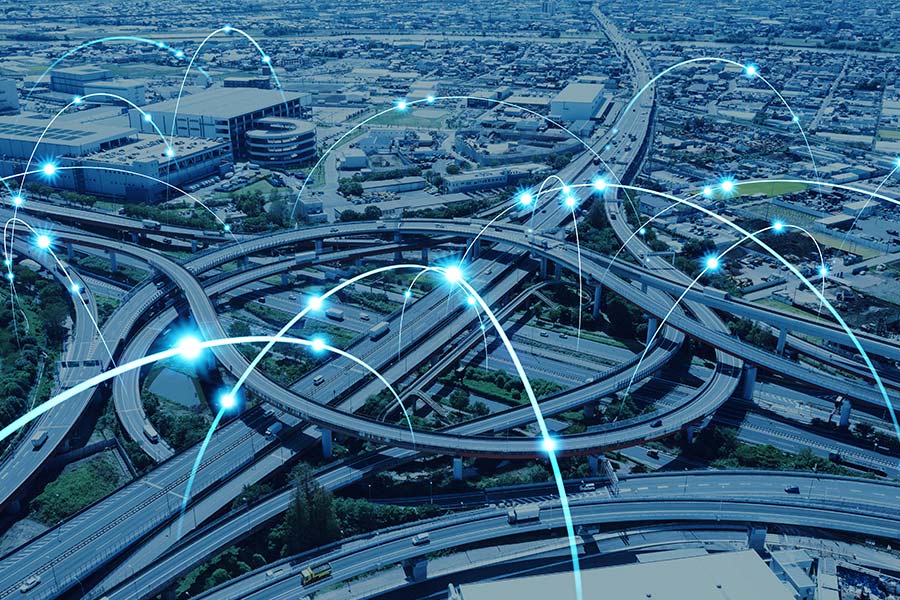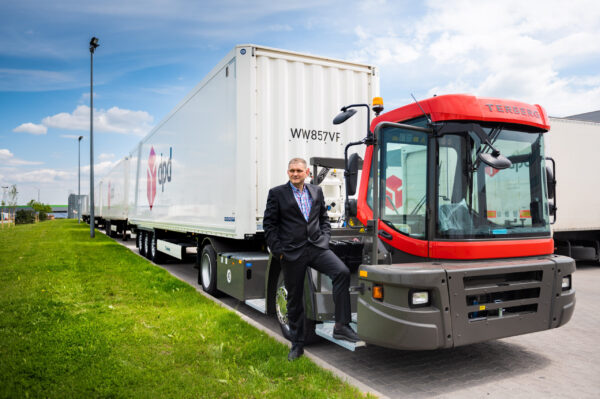PwC, at the invitation from the Polish Transport and Logistics Employers’ Association Poland (Związek Pracodawców Transport i Logistyka Polska), has prepared a report aimed at summarizing the expected directions of development of the Polish road hauling industry over the next 10 years.

“Since 2015, when we published the ‘Driver Labor Market’ report, changes in the industry have started to pick up momentum. The dynamic growth of the tonnage and transport work continues and, as a result, we have a shortage of drivers. Today, Polish carriers should prepare for further challenges in the law (including the provisions of the ‘Mobility Package’) and in technologies (including specifically the digitization and the autonomous transport). Given the diversity of anticipated changes, this report organizes their different dimensions to identify the most likely scenario for the development of the industry,” wrote the report’s authors.
In the years 2018-2022, the road transport industry can expect an aggregate increase in the volumes by almost 23% (in terms of the tonnage of goods transported). The Polish road hauling industry is currently at the peak of its growth phase. Its tonnage is estimated to increase from around 1.17 billion tons in 2018 to around 1.44 billion tons in 2022, with an average annual increase of 5.3%. The dynamics of the transport work done by Polish carriers in 2018-2022 will be positive, but will start to slow down due to the expected deceleration of economic indicators affecting the industry. So far, the international transport segment has been developing faster than the domestic one. After 2022, this trend may reverse due to the changes to EU law set out below. In the longer term, the growth can be expected to continue to slow down both domestically and internationally, particularly if the risk factors identified in the report materialize.
Industrialization of the transport, forwarding and logistics (TFL) industry vs. autonomous vehicles
One part of the report produced by PwC and Employers’ Association is devoted to the technological revolution as a factor of change in the road transport industry. Among others, the authors foresee a growth of importance of the vehicle autonomy and of the development of alternative vehicle propulsion systems. “Industrialization will be the fifth force that will revolutionize the road transport of goods and will reduce the gap in availability of drivers in Poland over the next decade,” argue the authors of the report. The transformation of the industry from the conventional into the industrialized one will be due to two technological factors:
1.Autonomy of vehicles
Autonomy of vehicles will reduce operating costs by around 15% until 2025, and potentially even by around 28% around 2030, compared to 2016, as a consequence of lower labor costs. It will also contribute to a decrease in the demand for drivers and an to increase in the demand for specialists involved in the operation of autonomous systems (in the fields of programming, configuration, maintenance and day-to-day supervision).
2. Development of alternative drives
The development of alternative drives will align the industry with the increasing CO2 emission requirements and reduce transport costs in the long term, but this impact will be observed no sooner than in 2025. In the short term, the Diesel engine will remain the standard, as it currently dominates the industry. In last mile transport, including in urban areas, vehicles with electric motors and CNG motors can be expected to gain on popularity faster, while long routes can be expected to switch to CNG as the fuel. The hydrogen propulsion in the road transport of goods in Europe is currently in the testing phase.
The development of new technologies involves high investments, so the autonomy and new drive solutions will be more readily available to large carriers with larger financial potential, which may be a factor increasing the level of concentration in the industry. However, the use of autonomous vehicles to a larger scale should not be expected before 2025. For the same reason, they can be expected to be used more widely first outside urban areas (on motorways) and in closed areas. In the middle of the next decade, partial autonomy in the form of convoys of vehicles, with one driver driving several vehicles, will become popular. Only closer to 2030 will it be possible to observe the deployment of fully autonomous vehicles on a larger scale.
The technological revolution as a change factor
According to PwC analysts, the road transport industry is facing a transformation in the areas of digital technologies, automation, development of alternative drives and solutions in the field of software and telematics. Smaller carriers may not have access to new solutions due to limited resources.
According to PwC’s “21st CEO Survey”, as many as 68% of CEOs and directors of global transport and logistics companies expect that changes in the key service delivery technologies will have a breakthrough impact on their business. The expected impact of the technological change is unprecedented. Given that significant technological developments have not been observed in recent years, apart from the increase in engine efficiency and in transport volumes.
The Diesel engine, which has been in use for decades, is the standard in the road transport industry in the EU-28. According to ACEA’a data, in 2016, Diesel vehicles accounted for more than 96.1% of vehicles with DMC >3.5 tons in the EU-28. Interestingly, this figure has increased from 95.5% in 2015, which means that the Diesel engine continues to be the main solution in Europe.
So far, the lack of technological advances in road transport has been linked to opportunities for dynamic growth, which have so far not required technology. It is only the current increase in costs and the shrinking of margins in the industry that is becoming the reason why companies are looking for technological solutions, starting with digitization.
The analysis of the current technological solutions has made the following observations on the road freight industry:
- The basic digitization has three dimensions: computerization of the transport industry in the area of internal processes; platformization of service sales, including automation of processes at the interface with the client; the emergence of digital giants – large distribution companies, such as Amazon, which have developed large-scale operations through the digitization of their sales processes and through the platformization, and which now begin to exert pressure on logistic service providers.
- Implementation of more advanced digital solutions – such as smart transport systems or block chain solutions (after 2023), will be possible based on the basic digitization
- The autonomy of vehicles will have a huge impact on the market, reducing transport costs by up to 28% (in particular due to savings on the cost of employing drivers) in the post-2025 perspective. However, it will take 5 to 10 years for technological solutions in this area to reach maturity.
- An extensive use of alternative drives can be expected in Poland over a period of more than 5 years, while further reductions in fuel consumption in conventional engines will be hampered by the process of its optimization in the last two decades.
- New technologies for the transport of goods may increase availability of cargo space, reduce costs and optimize labor costs, although they will not be as important for the cost-effectiveness of the industry as autonomy or alternative drives.
The digitization of the transport and logistics sector is already taking place and will continue to progress over the next 10 years, increasing revenues of transport companies, reducing costs and improving quality of services for clients.
The transport and logistics sector has a huge room for development through digitization, as the technologies the sector relies on are already mature, which can be seen in the examples presented later in this chapter. The digitization is no longer just about administration, accounting processes and internal processes. It also enters the sphere of creating new business processes (e.g. related to the control of physical conditions in the transport process, electronic clearance of goods in terminals) and even affects the change in the way the sector cooperates with its customers and concludes contracts (seen in the “platformization” of service transactions).
Transport companies use digitization to increase their revenues, simplify processes, transform services, products and business models, and reduce the impact of the lack of adequately skilled workers.
Popular
Especially today, just as every other day, grateful for persistent struggling with time and adversities, appreciating invaluable role in creating stable logistics and supply chain and both building and developing Polish economy, we wish all Couriers ...
We talk to Marcin Michalak, Director of Network Management at DPD Poland, about the impact of the COVID-19 pandemic on the operations of courier companies, the challenges of managing one of the largest transport networks in Poland, as well as the cou...
A world where the ubiquitous technology has solved all current problems, a zero-growth world or a world without sufficient international cooperation. These are the scenarios for the future outlined in the new “Logistics 2040” report published by ...


